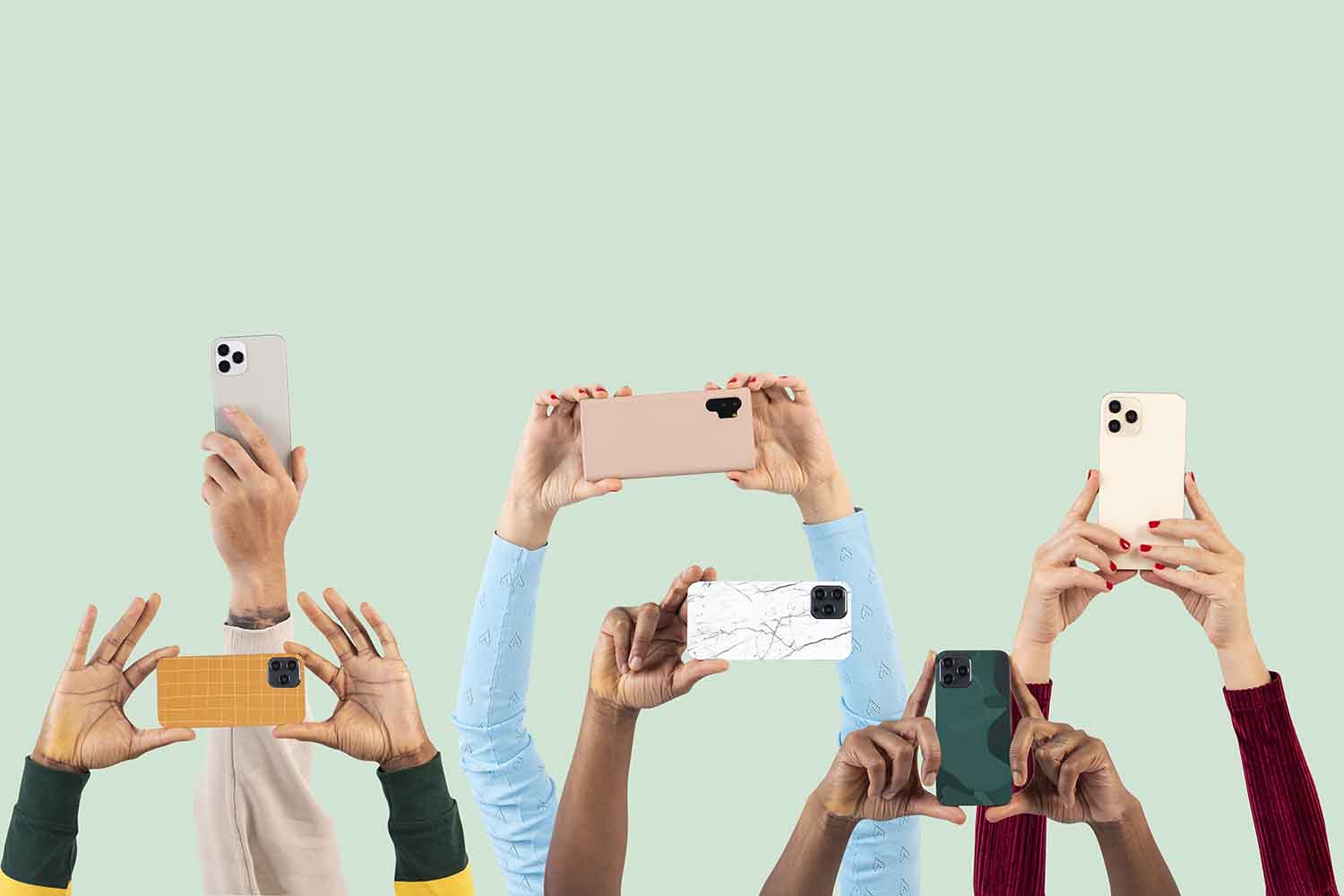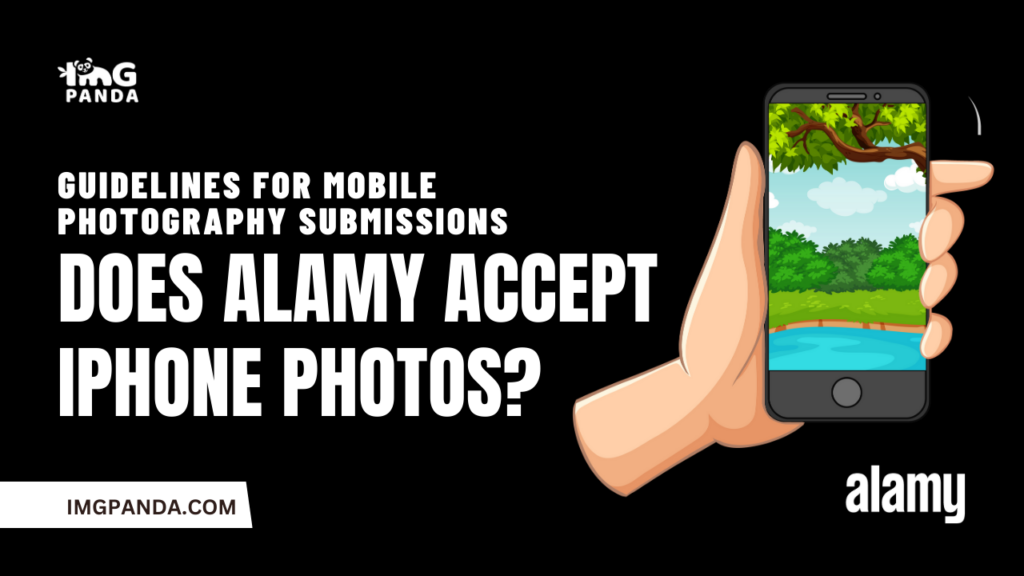Introduction:
Mobile photography has witnessed an exponential rise in popularity, thanks to the advancements in smartphone camera technology and the convenience it offers to capture life's moments on the go. As the demand for authentic and high-quality mobile photography increases across various industries, many aspiring photographers are eager to showcase their skills and creativity on stock photography platforms like Alamy.
However, a pertinent question arises: Does Alamy accept iPhone photos or mobile photography in general? In this blog post, we will delve into Alamy's submission guidelines, explore the impact of iPhone photos on stock photography, and uncover the guidelines for submitting mobile photography to Alamy.
Also Read This: EyeEm How-To: Navigating the Platform
The Rise of Mobile Photography
The advent of smartphones revolutionized the way we capture and share moments, giving birth to the phenomenon of mobile photography. In recent years, mobile photography has experienced an extraordinary rise in popularity, transforming how people approach and engage with photography.
1. Technological Advancements: Smartphone manufacturers have invested heavily in camera technology, equipping devices with high-resolution sensors, advanced image processing, and multiple lenses. These advancements have elevated the image quality and capabilities of smartphone cameras, rivaling some traditional point-and-shoot cameras.
2. Accessibility and Convenience: Almost everyone carries a smartphone, making photography accessible to millions worldwide. The convenience of having a capable camera in one's pocket at all times has led to spontaneous capturing of moments, fueling the trend of mobile photography.
3. Social Media and Sharing Culture: Social media platforms have become hubs for sharing photos instantly. The rise of platforms like Instagram, Snapchat, and Facebook has created a thriving community of mobile photographers eager to showcase their work and engage with a global audience.
4. Photography Apps and Editing Tools: A wide range of photography apps and editing tools are readily available on app stores, empowering users to enhance, retouch, and creatively modify their images directly on their smartphones. These apps have democratized the art of photo editing, making it accessible to both amateurs and enthusiasts.
5. Creative Expression and Storytelling: Mobile photography encourages creative expression and storytelling through images. Users can capture diverse subjects, experiment with different styles, and document their daily lives or travels, allowing for a more personal and intimate connection with their audience.
6. Community and Learning Opportunities: The mobile photography community fosters collaboration, learning, and inspiration. Through online platforms, users can participate in challenges, join photography groups, and learn from experienced mobile photographers, nurturing their skills and passion for the art.
7. Evolving Perspectives on Photography: Mobile photography challenges traditional notions of photography as being solely reserved for professional-grade equipment. It has sparked conversations about what makes a photograph valuable and has redefined photography as a medium for creative expression rather than solely technical prowess.
The rise of mobile photography has had a profound impact on the photography industry, blurring the lines between amateur and professional photography. As mobile cameras continue to evolve and technology advances, mobile photography is expected to remain a driving force in visual storytelling, pushing the boundaries of creativity and democratizing photography for generations to come.
[caption id="attachment_188092" align="alignnone" width="1500"] The Rise of Mobile Photography[/caption]
The Rise of Mobile Photography[/caption]
Also Read This: The Rise of Social Commerce: How to Leverage Social Media to Sell Products
Alamy's Submission Guidelines
Alamy, as one of the leading stock photography platforms, maintains specific submission guidelines to ensure the quality and relevance of the images in their collection.
1. Image Quality: Alamy expects high-resolution images with excellent clarity and minimal noise. Images should be sharp and well-focused, free from artifacts or distortions. Professional-level image quality is essential to meet the standards of commercial and editorial use.
2. Metadata and Keywords: Accurate and relevant metadata is crucial for the discoverability of images. Photographers must provide comprehensive descriptions, titles, and relevant keywords for each image to make them easily searchable by potential buyers.
3. Model and Property Releases: If the image contains recognizable people or private property, photographers must obtain appropriate model and property releases to ensure legal compliance for commercial usage.
4. Copyright and Licensing: Photographers are responsible for owning the copyright to their images or having appropriate authorization to license them on Alamy. Any copyrighted elements, such as trademarks or copyrighted artworks, must not be present in the images.
5. Editorial and Commercial Distinction: Images submitted to Alamy should be appropriately categorized as either editorial or commercial. Editorial images should depict real events, people, or newsworthy subjects without alterations, while commercial images may include artistic interpretations and manipulations.
6. No Watermarks or Logos: Images submitted to Alamy must not contain watermarks, logos, or other distracting elements that could hinder their commercial use.
7. Content Relevance: Images should be relevant to a wide audience and have potential commercial value. Alamy's collection encompasses various themes, including lifestyle, nature, travel, business, and more.
8. Ethical Considerations: Alamy prohibits the submission of offensive, explicit, or culturally inappropriate content. Images should adhere to ethical standards and respect diverse cultures and beliefs.
9. Proper Release Documentation: For images featuring private properties, landmarks, or copyrighted buildings, photographers must provide proper documentation to confirm that they have the right to license those images for commercial use.
[caption id="attachment_188093" align="alignnone" width="1500"] Alamy's Submission Guidelines[/caption]
Alamy's Submission Guidelines[/caption]
Also Read This: Storyblocks Subscription Cancellation: What You Need to Know
The Impact of iPhone Photos on Stock Photography
The rise of mobile photography, particularly iPhone photos, has had a profound impact on the stock photography industry. Once considered a medium primarily reserved for professional cameras, stock photography now embraces the creative potential of smartphone images.
1. Diversification of Content:
iPhone photos have brought a fresh and diverse range of content to stock photography collections. The accessibility and ease of use of iPhones have empowered individuals from various backgrounds and skill levels to contribute to the stock photography market, resulting in a broader selection of subjects, styles, and perspectives.
2. Authenticity and Relatability:
iPhone photos often capture authentic and relatable moments from everyday life. These candid and unposed images resonate with audiences, making them valuable assets for marketing, advertising, and editorial use. The genuine emotions and relatability of iPhone photos contribute to their increasing popularity among content creators and consumers alike.
3. Mobile-First Content Consumption:
With the growing use of smartphones for content consumption, mobile photography has become a fitting choice for catering to the needs of mobile users. As people rely more on their mobile devices to access information and media, the demand for mobile-optimized and mobile-friendly visuals has surged, making iPhone photos an ideal fit for this audience.
4. Social Media and Influencer Marketing:
Social media platforms, heavily driven by visual content, have become essential marketing channels for brands and influencers. iPhone photos, with their compelling aesthetics and quick turnaround time, play a significant role in social media marketing, influencer campaigns, and brand storytelling.
5. Creative Editing and Filters:
Various photo editing apps and filters available on iPhones enable users to enhance and modify their images creatively. This versatility allows photographers to experiment with artistic styles, adding a unique touch to their iPhone photos, and making them stand out in the stock photography marketplace.
6. Convenience for Contributors:
The convenience of shooting and uploading iPhone photos directly from the device simplifies the submission process for contributors. This accessibility encourages more photographers to participate in stock photography, contributing to the overall growth and diversity of stock image collections.
7. Rapid Response to Current Events:
The immediacy of iPhone photos allows for quick documentation and response to real-time events and news. Photojournalists and citizen photographers can capture breaking news or important social issues on their iPhones, providing relevant and timely visuals for editorial use.
This video explains about Impact of iPhone Photos on Stock Photography:
Also Read This: Closing Time: Guide to Closing Your Shopify Store
Does Alamy Accept iPhone Photos?
Yes, Alamy accepts iPhone photos. You can submit your iPhone photos through the Stockimo app or through the Alamy website.
Following are the requirements for submitting iPhone photos to Alamy:
Your iPhone photos must meet the following requirements:
- They must be in high resolution (at least 300 dpi).
- They must be well-lit and in focus.
- They must be original and creative.
- They must be free of copyright infringement.
How do I submit my iPhone photos to Alamy?
You can submit your iPhone photos through the Stockimo app or through the Alamy website.
To submit your iPhone photos through the Stockimo app:
- Open the Stockimo app.
- Tap the "+" button.
- Select the photos you want to submit.
- Add a caption and keywords for each photo.
- Tap "Submit".
To submit your iPhone photos through the Alamy website:
- Go to the Alamy website.
- Click on the "Contribute" tab.
- Click on the "Mobile Photography" tab.
- Click on the "Upload" button.
- Select the photos you want to submit.
- Add a caption and keywords for each photo.
- Click on the "Upload" button.
Hi Robert, all the smartphone photos featured on our site are taken on an iPhone, including those on the blog as we aren't able to accept Android yet. We understand your frustration but unfortunately we don't have in-house dev teams dedicated to do the work needed at this time.
— Alamy (@alamy) January 12, 2021
Also Read This: Creating Visually Appealing Blog Posts with eStockPhoto
FAQ
Does Alamy accept iPhone photos?
Yes, Alamy accepts iPhone photos. You can submit your iPhone photos through the Stockimo app or through the Alamy website.
What are the requirements for submitting iPhone photos to Alamy?
Your iPhone photos must meet the following requirements:
- They must be in high resolution (at least 300 dpi).
- They must be well-lit and in focus.
- They must be original and creative.
- They must be free of copyright infringement.
How do I submit my iPhone photos to Alamy?
You can submit your iPhone photos through the Stockimo app or through the Alamy website.
To submit your iPhone photos through the Stockimo app:
- Open the Stockimo app.
- Tap the "+" button.
- Select the photos you want to submit.
- Add a caption and keywords for each photo.
- Tap "Submit".
To submit your iPhone photos through the Alamy website:
- Go to the Alamy website.
- Click on the "Contribute" tab.
- Click on the "Mobile Photography" tab.
- Click on the "Upload" button.
- Select the photos you want to submit.
- Add a caption and keywords for each photo.
- Click on the "Upload" button.
How much do I get paid for my iPhone photos on Alamy?
You will earn a commission on each sale of your iPhone photos on Alamy. The commission rate varies depending on the type of image and the usage rights.
For example, you will earn a higher commission rate for images that are used for editorial purposes than you will for images that are used for commercial purposes.
How long does it take for my iPhone photos to be reviewed and approved by Alamy?
It usually takes a few days for your iPhone photos to be reviewed and approved by Alamy. However, it may take longer depending on the volume of submissions.
What happens if my iPhone photos are not approved by Alamy?
If your iPhone photos are not approved by Alamy, you will receive an email notification explaining the reason for the rejection. You can then resubmit your photos after making the necessary changes.
How do I keep track of the sales of my iPhone photos on Alamy?
You can keep track of the sales of your iPhone photos on Alamy by logging into your Alamy account. In your account, you will see a list of all of your submitted photos and their sales history.
How can I get help with submitting my iPhone photos to Alamy?
If you have any questions about submitting your iPhone photos to Alamy, you can contact Alamy customer support. You can find the contact information for Alamy customer support on the Alamy website.
What are the benefits of selling my iPhone photos on Alamy?
There are several benefits to selling your iPhone photos on Alamy, including:
- You can earn a commission on each sale of your photos.
- Your photos will be seen by a global audience of potential buyers.
- You can keep the copyright to your photos.
- You can set your own prices for your photos.
Is there anything else I should know about submitting my iPhone photos to Alamy?
Yes, here are a few additional things you should know about submitting your iPhone photos to Alamy:
- You must be at least 18 years old to submit photos to Alamy.
- You must own the copyright to the photos you submit.
- You must not submit photos that are copyrighted by someone else.
- You must not submit photos that are sexually suggestive, violent, or otherwise offensive.
Conclusion
The rise of mobile photography, driven by the advancements in smartphone cameras and the convenience they offer, has had a profound impact on the stock photography industry. Alamy recognized the value of mobile images in diversifying and enriching their collection, embracing the authenticity, relatability, and creativity that iPhone photos bring.
However, it is crucial to keep in mind that the policies of stock photography platforms, including Alamy, can change over time. To determine the current stance on iPhone photos and mobile photography submissions, it is essential to refer directly to Alamy's official website or contact their support team for the most up-to-date information.









































